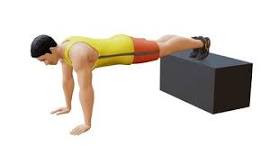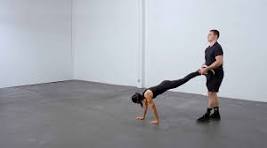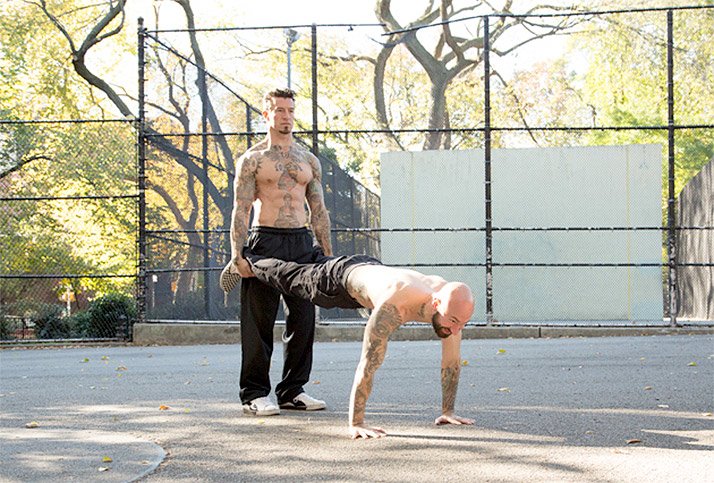
Wheelbarrow push-ups are a partner-based exercise that targets upper body strength, core stability, and full-body coordination. This challenging movement enhances balance, endurance, and teamwork while offering an effective full-body workout.
Wheelbarrow push-ups are an advanced variation of traditional push-ups that incorporate both upper and lower body strength, making them a challenging full-body exercise. This unique exercise requires a partner for support and offers numerous benefits, including improved strength, balance, and coordination. By leveraging the wheelbarrow movement pattern, this exercise engages multiple muscle groups simultaneously, promoting functional strength, core stability, and overall fitness.
In this article, we will dive into how to perform wheelbarrow push-ups correctly, their benefits, modifications for various skill levels, and how to incorporate them into your workout routine.
What Are Wheelbarrow Push-ups?
Wheelbarrow push-ups are a partner-based variation of the traditional push-up. In this exercise, one person performs a standard push-up while their partner holds their legs in the air, supporting their body like a wheelbarrow. The individual performing the push-up must lower their chest to the ground and push back up while the partner holds their legs steady in the air.
This movement requires both strength and stability, as the individual performing the push-ups needs to maintain a solid core to prevent their body from collapsing while pushing. The partner providing support must engage their own core and upper body to help maintain balance and stability for the person performing the push-ups.
How to Perform Wheelbarrow Push-ups
Step 1: Positioning the Partners
a) Partner 1 (the person performing the push-up) starts in a standard push-up position with hands placed shoulder-width apart on the floor.
b) Partner 2 (the person supporting the legs) stands behind Partner 1, facing their feet.
c) Partner 2 grabs both of Partner 1’s legs at the ankles, lifting them so that Partner 1’s body is in a horizontal position, supported by Partner 2’s arms. Partner 1’s feet should be off the ground, and their legs should remain straight.

Step 2: Proper Push-up Form
a) Partner 1 keeps their body aligned, making sure their core is engaged to prevent their body from sagging.
b) Inhale and lower your chest to the ground, keeping your elbows slightly tucked in to avoid flaring them out.
c) Exhale and push your body back up, extending your arms fully while maintaining core engagement.
d) Maintain control throughout the movement, ensuring that you don’t let your body collapse or lose form.
Step 3: Partner Assistance
a) Partner 2 should provide stable support by gripping Partner 1’s ankles firmly. They need to engage their own core and maintain balance to keep Partner 1’s legs straight and in the air.
b) The partner holding the legs should communicate with the person performing the push-ups to ensure they are properly aligned and moving through the exercise in sync.
Benefits of Wheelbarrow Push-ups
1. Enhanced Upper Body Strength
The standard push-up is an excellent upper-body exercise that targets the chest, shoulders, and triceps. By adding the wheelbarrow aspect, you increase the intensity, requiring more effort from the upper body to stabilize the movement. This makes wheelbarrow push-ups an effective exercise for building strength in the chest, shoulders, arms, and even the upper back.

2. Core Activation
Wheelbarrow push-ups demand significant core strength from the person performing the push-up. Because the body is held in a horizontal position and the legs are lifted off the ground, the core must engage to maintain stability and avoid any sagging in the lower back. The person performing the push-up must focus on keeping their core tight and their body in a straight line throughout the movement.
Additionally, the partner who is holding the legs also engages their core to maintain proper positioning and balance. This makes wheelbarrow push-ups an excellent way to work on overall core stability and endurance.
3. Improved Balance and Coordination
Maintaining balance during wheelbarrow push-ups is crucial. The person performing the push-up must focus on stabilizing their body while executing the push-up, and the partner must assist by maintaining a firm grip on the legs. This dynamic movement enhances coordination between both partners and builds the ability to maintain stability under challenging conditions.
4. Full-Body Engagement
Unlike traditional push-ups that primarily target the upper body, wheelbarrow push-ups engage the entire body. The person performing the push-up needs to maintain proper posture and activate their core, glutes, and legs to avoid any misalignment during the push-up motion. The partner who is supporting the legs also engages their upper body and core to keep the position steady, resulting in a full-body workout that improves overall strength and muscle endurance.
5. Partner Bonding and Teamwork
In addition to the physical benefits, wheelbarrow push-ups promote teamwork and cooperation between partners. Both individuals must work together, communicate, and maintain synchronization to successfully perform the exercise. This aspect of teamwork can foster a sense of collaboration and trust while challenging both individuals physically.
Modifications for Different Fitness Levels

Wheelbarrow push-ups can be modified to suit different fitness levels. Here are some variations to help adjust the intensity based on your ability:
1. Beginner Modifications
a) Wall-Assisted Wheelbarrow Push-ups: If you’re new to wheelbarrow push-ups or push-ups in general, try performing the exercise with your feet supported against a wall. This will reduce the amount of body weight you need to lift, making the push-up easier to perform while still maintaining the wheelbarrow
position.
b) Knee Wheelbarrow Push-ups: For beginners, allow the person performing the push-up to drop to their knees while keeping their upper body elevated. This modification reduces the amount of weight on the upper body while still incorporating the dynamic movement of the wheelbarrow.
2. Intermediate Modifications
a) Partial Range of Motion: If you’re unable to complete a full push-up, start with a partial range of motion. Lower your chest partway to the ground and push back up. Over time, work on increasing the range of motion to achieve a full push-up.
3. Advanced Modifications
a) Elevated Push-ups: For more experienced individuals, try performing the wheelbarrow push-up with the feet elevated on a platform (such as a bench). This increases the intensity by shifting more of the body’s weight onto the upper body and core.
b) Single-Leg Wheelbarrow Push-ups: If you’re looking for an advanced challenge, try performing wheelbarrow push-ups with one leg raised at a time. This increases the instability and requires even more core engagement to maintain balance.
Incorporating Wheelbarrow Push-ups Into Your Workout Routine
Wheelbarrow push-ups can be added to your workout in a variety of ways. Whether you’re aiming to build upper body strength, improve core stability, or add some dynamic challenge to your routine, this exercise can fit into a variety of fitness programs. Here are a few ideas on how to include them:
1. Full-Body Strength Circuit
Create a circuit that includes compound exercises for both the upper and lower body. Perform 10-12 wheelbarrow push-ups followed by other exercises such as squats, lunges, or deadlifts. This will provide a well-rounded, full-body workout.
2. Core-Focused Routine
Since wheelbarrow push-ups require significant core engagement, they are an excellent addition to a core workout. Pair them with other core exercises, such as planks, Russian twists, or leg raises, for a challenging routine that strengthens the entire midsection.
3. Partner Workouts
Wheelbarrow push-ups are ideal for partner workouts. You and your workout partner can alternate between performing push-ups and assisting each other with the leg support. This not only helps you improve strength but also builds teamwork and communication.
Conclusion
Wheelbarrow push-ups are an advanced and challenging exercise that provides a full-body workout. By incorporating both upper and lower body strength, core engagement, and balance, this exercise helps improve overall fitness while fostering teamwork and coordination. Whether you’re a beginner or an advanced athlete, there are plenty of ways to modify this exercise to suit your fitness level and goals. Incorporating wheelbarrow push-ups into your routine will not only increase your physical strength but also help you develop the stability and functional movement patterns necessary for better athletic performance and daily activities.
Q&A Section
Q: Are wheelbarrow push-ups suitable for beginners?
A: Yes, wheelbarrow push-ups can be modified to suit beginners. Start with wall-assisted push-ups or knee variations to build strength and gradually progress to the full movement.
Q: Can wheelbarrow push-ups improve my core strength?
A: Absolutely! Wheelbarrow push-ups require significant core engagement to maintain stability and alignment. Over time, they will improve your core strength and stability.
Q: How many wheelbarrow push-ups should I perform in a set?
A: Aim for 8-12 repetitions per set, depending on your fitness level. If you’re a beginner, start with fewer reps and gradually increase as your strength improves.
Q: Can I do wheelbarrow push-ups alone?
A: Since wheelbarrow push-ups require a partner for leg support, it is not recommended to perform this exercise alone. However, you can substitute the exercise with other variations that don’t require a partner.